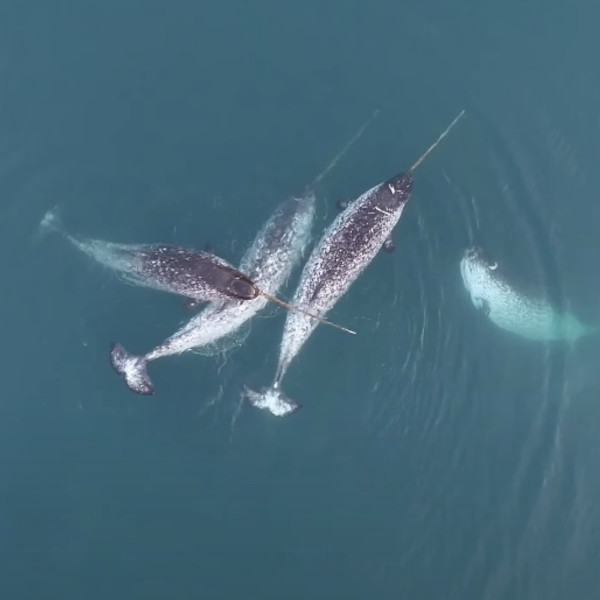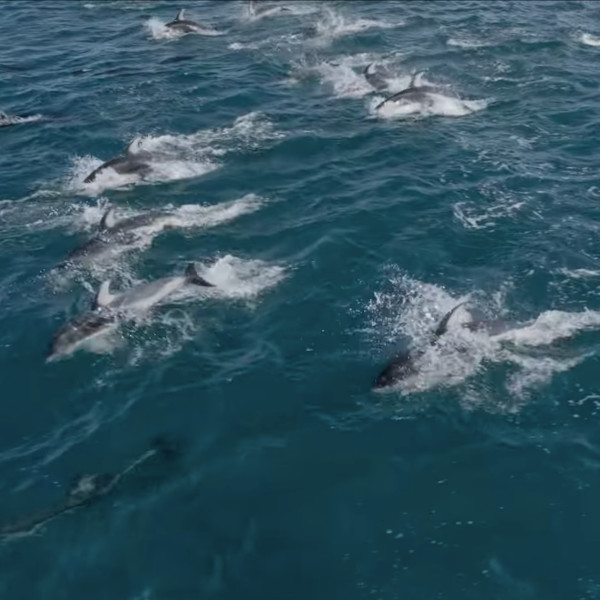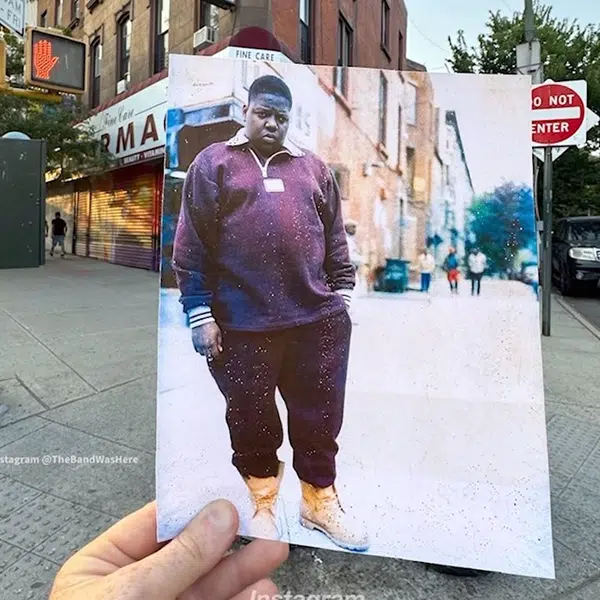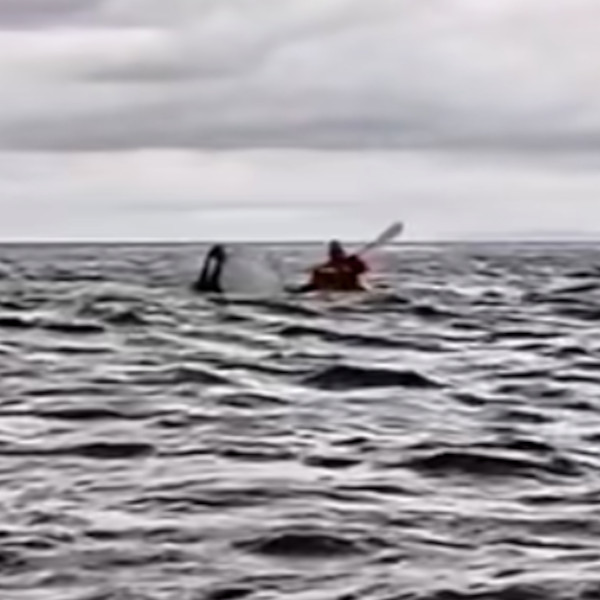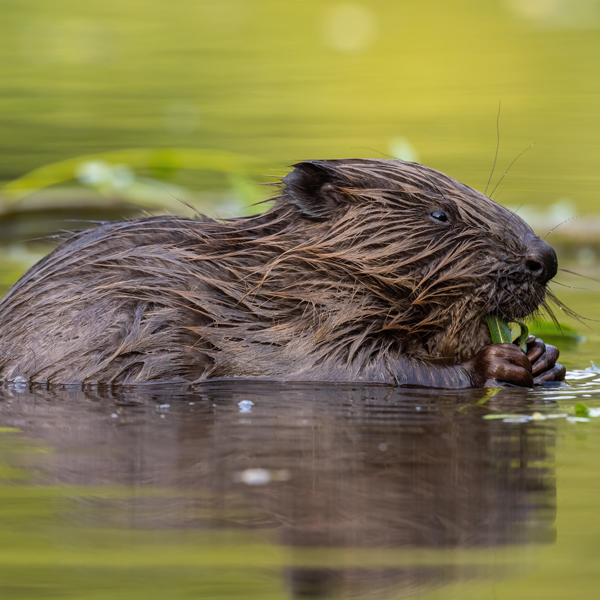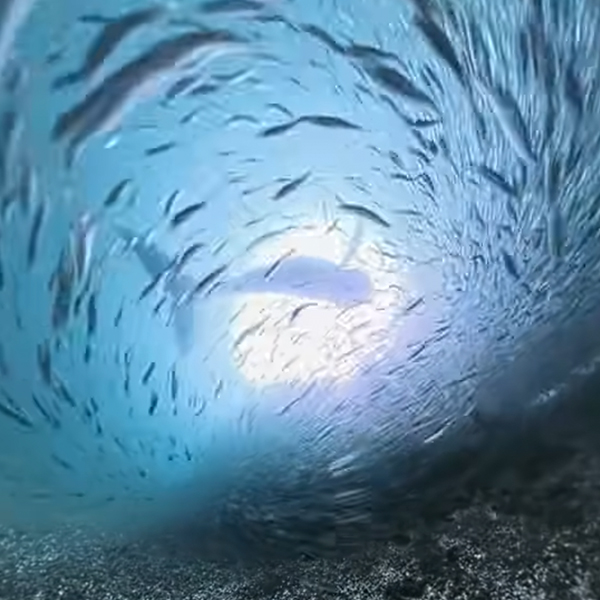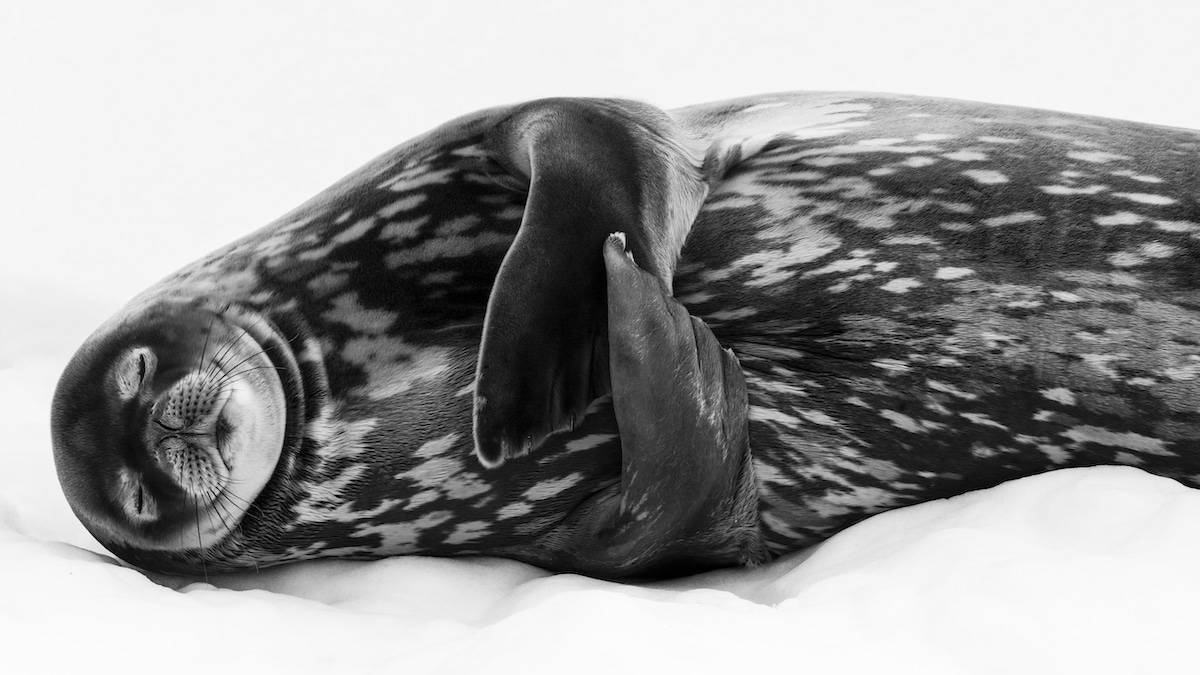
“Sleeping like a Weddell” by Ralf Schneider. Highly Commended 2019, Black and White.
“Hugging its flippers tight to its body, the Weddell seal closed its eyes and appeared to fall into a deep sleep. Lying on fast ice (ice attached to land) off Larsen Harbour, South Georgia, it was relatively safe from its predators – killer whales and leopard seals – and so could completely relax and digest. Weddell seals are the world’s most southerly breeding mammals, populating inshore habitats around the Antarctic continent. Reaching lengths of up to 3.5 meters (11½ feet) – with the females somewhat larger than the males – their large bodies are covered in a thick layer of blubber to keep them warm above and below the icy waters of the Southern Ocean. Feeding mainly on large fish, Weddell seals are impressive divers capable of descending to more than 500 meters (1,640 feet), with high reserves of the oxygen‑binding protein myoglobin in their muscles. This helps them to hunt underwater for long periods, sometimes more than an hour. Shooting from an inflatable boat, Ralf tightly framed the sleeping seal, using the white backdrop of ice and soft light from the overcast sky to mimic the effect of a studio portrait. Converting his image to black and white accentuated the tones and textures of the seal’s dense mottled fur.”
For fifty-five years, the Natural History Museum in London has celebrated photographic excellence with its Wildlife Photographer of the Year competition. In the leadup to the overall winners' announcement on October 15, the organization has released a beautiful selection of highly commended images. From a tranquil image of a Weddell seal napping to a ferocious encounter between a lone cheetah and a pack of wild dogs, these finalist photographs are an exciting preview of what's to come.
Nearly 50,000 photographs from 100 countries were entered into the 2019 competition, all showcasing the artistry of wildlife photography. At the same time, many of the photographs also speak to the daily threats that animals in the wild face—whether through natural predators or from man-made situations. For instance, Spanish photographer Eduardo Del Álamo captured a scene that, at first glance, appears playful—as if a penguin and seal are playing tag. However, it only takes a moment to realize that the perfectly framed situation was a matter of life or death for the penguin, who was making a break for safety as it was being hunted down.
This natural game between prey and predator is contrasted with Matthew Ware's disturbing photo of a Kemp’s ridley sea turtle on a beach in Alabama. The highly endangered animal lost its life when it became entangled in discarded fishing gear. While difficult to see, Ware's photograph is an important reminder of the real cost of carelessness. Awarding this type of powerful imagery is just one way that the Wildlife Photographer of the Year contributes to meaningful discourse about how we can help, not harm, living creatures.
“For more than fifty years this competition has attracted the world's very best photographers, naturalists, and young photographers, but there has never been a more important time for audiences all over the world to experience their work in our inspiring and impactful exhibition,” shares Dr. Tim Littlewood, Director of Science at the Natural History Museum and member of the judging panel. “Photography has a unique ability to spark conversation, debate and even action. We hope this year's exhibition will empower people to think differently about our planet and our critical role in its future.”
While we wait for the winners' announcement, enjoy more highly commended photographs from the 2019 Wildlife Photographer of the Year contest.
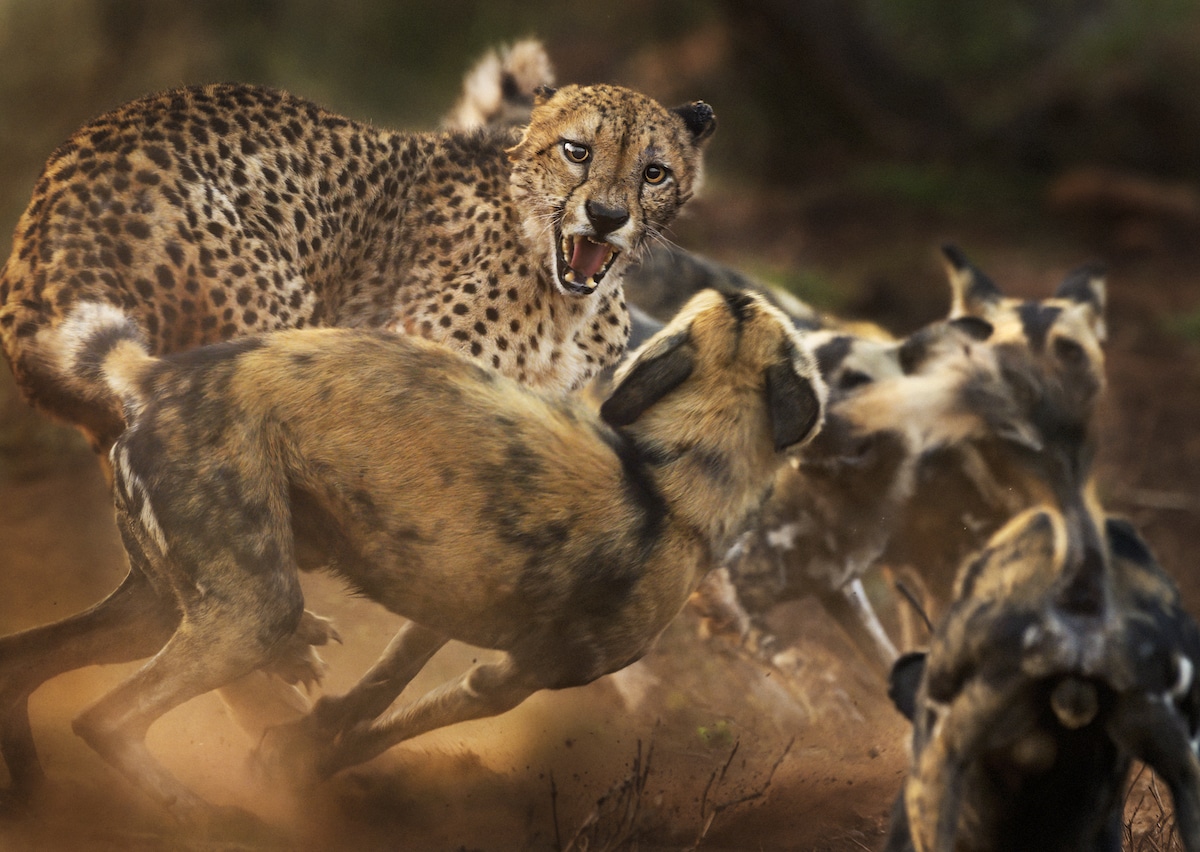
“Big cat and dog spat” by Peter Haygarth (UK). Highly Commended 2019, Behavior: Mammals.
“In a rare encounter, a lone male cheetah is set upon by a pack of African wild dogs. (Both species have disappeared from much of their former ranges, with fewer than 7,000 left of each, mainly due to habitat loss and fragmentation. Both exist at low densities.) Peter had been following the dogs by a vehicle as they hunted in Zimanga Private Game Reserve, KwaZulu-Natal, South Africa. A warthog had just escaped the pack when the leading dogs came across the big cat. At first, the dogs were wary, but as the rest of the 12-strong pack arrived, their confidence grew, and they began to encircle the cat, chirping with excitement. The elderly cheetah hissed and lunged back at the mob, his left ear tattered, the right one pinned back in the ruckus. As dust flew in the morning light, Peter kept his focus on the cat’s face. In a few minutes, the spat was over as the cheetah fled.”

“If penguins could fly” by Eduardo Del Álamo (Spain). Highly Commended 2019, Behavior: Mammals,
“A Gentoo penguin – the fastest underwater swimmer of all penguins – flees for its life as a leopard seal bursts out of the water. Eduardo was expecting it. He had spotted the penguin, resting on a fragment of broken ice. But he had also seen the leopard seal patrolling off the Antarctic Peninsula coast, close to the Gentoo's colony on Cuverville Island. As Eduardo’s inflatable headed towards the penguin, the seal passed directly beneath the boat. Moments later, it surged out of the water, mouth open. The penguin made it off the ice, but the seal now seemed to turn the hunt into a game. Leopard seals are formidable predators. Females can be 3.5 meters (11½ feet) long and weigh more than 500 kilograms (1,100 pounds), males slightly less. Their slender bodies are built for speed, with wide jaws bearing long canines and sharply pointed molars. They hunt almost anything, from fish to the pups of other seal species. And they also play with their prey, as in this instance, with the leopard seal pursuing the penguin for more than 15 minutes before finally catching and eating it.”
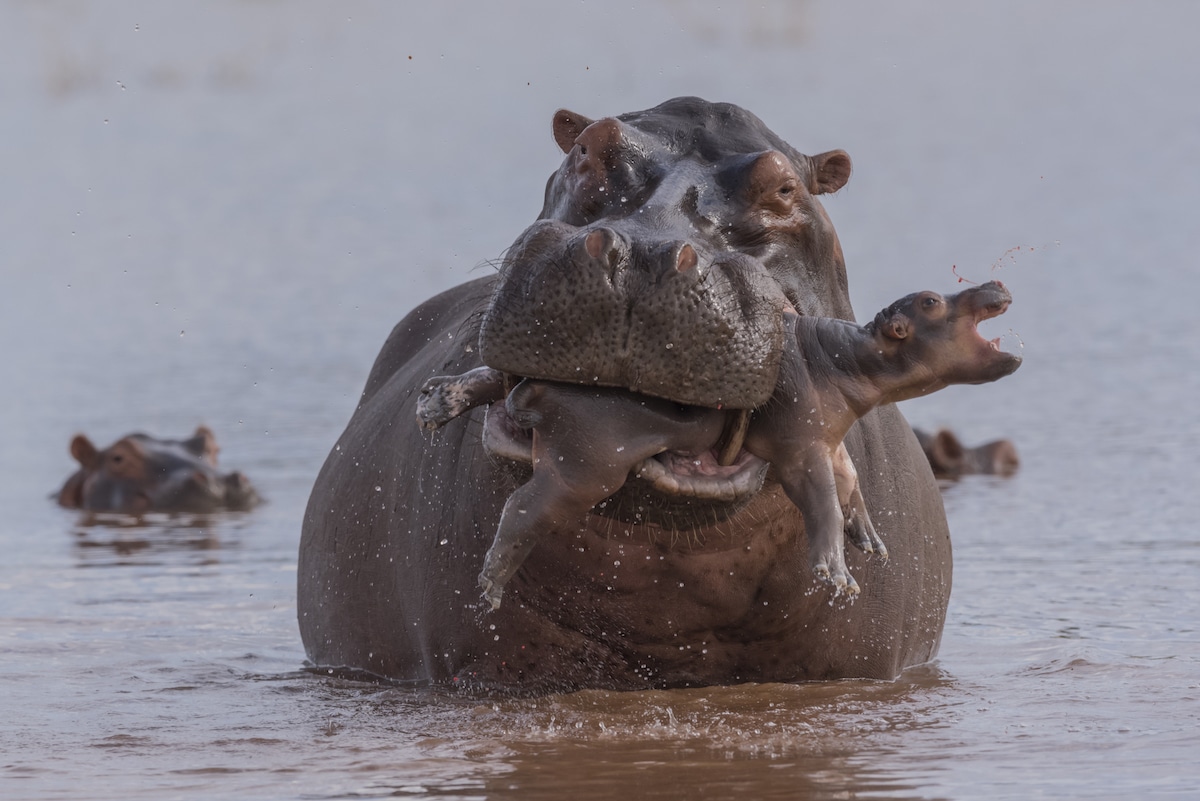
“Last gasp” by Adrian Hirschi (Switzerland). Highly Commended 2019, Behavior: Mammals.
“A newborn hippo, just days old, was keeping close to its mother in the shallows of Lake Kariba, Zimbabwe, when a large bull suddenly made a beeline for them. He chased the mother, then seized the calf in his huge gape, clearly intent on killing it. After trying to drown it, he tried to crush it to death. All the while, the distraught mother looked on. Adrian’s fast reaction and fast exposure captured the shocking drama. Infanticide among hippos is rare but may result from the stress caused through overcrowding when their day-resting pools dry out. A male may also increase his reproductive chances by killing young that are not his, triggering females to go into oestrus, ready to mate with him. Male hippos are also aggressively territorial, and brutal fights are not uncommon. If they feel threatened by an accidental encounter, hippos will also attack and kill humans.”

“Lucky break” by Jason Bantle (Canada). Highly Commended 2019, Urban Wildlife.
“An ever-adaptable raccoon pokes her bandit-masked face out of a 1970s Ford Pinto on a deserted farm in Saskatchewan, Canada. In the back seat, her five playful kits trill with excitement. It was a sentiment shared by Jason, waiting silently in a nearby hide, who had been hoping for this chance every summer for several years. The only access into the car was through the small hole in the cracked safety glass of the windscreen. The gap was blunt‑edged but too narrow a fit for a coyote (the primary predator of raccoons in the area), making this an ideal place for a mother raccoon to raise a family. On this evening, she paused at the exit to check the surroundings just long enough for Jason to make his long twilight exposure. She then squeezed out to spend the night looking for food – anything from fruit, nuts and eggs to invertebrates and small vertebrates.”
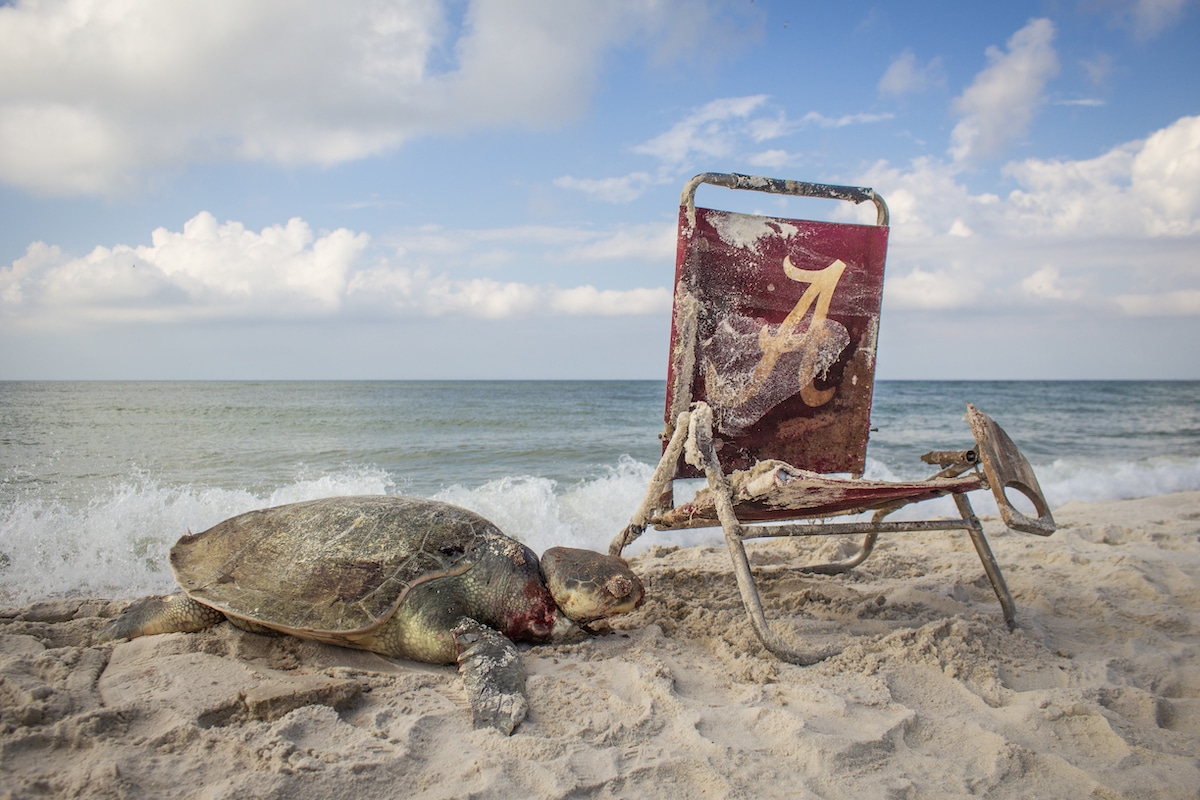
“Beach waste” by Matthew Ware (USA). Highly Commended 2019, Wildlife Photojournalism.
“From a distance, the beach scene at Alabama’s Bon Secour National Wildlife Refuge looked appealing: blue sky, soft sand, and a Kemp’s ridley sea turtle. But as Matthew and the strandings patrol team got closer they could see the fatal noose around the turtle’s neck attached to the washed-up beach chair. The Kemp’s ridley is not only one of the smallest sea turtles – just 65 centimeters (2 feet) long – it is also the most endangered. Over the past 50 years, human activities – from egg and meat consumption to incidental capture in fishing nets – have greatly reduced its numbers. Today, despite the protection of its limited nesting sites along the western coast of the Gulf of Mexico and a requirement for trawlers to use turtle-excluders, it is still under threat. But as Matthew witnesses on his daily nesting-patrol, another danger is injury or drowning resulting from the huge amount of discarded fishing gear and rubbish that ends up in the ocean.”
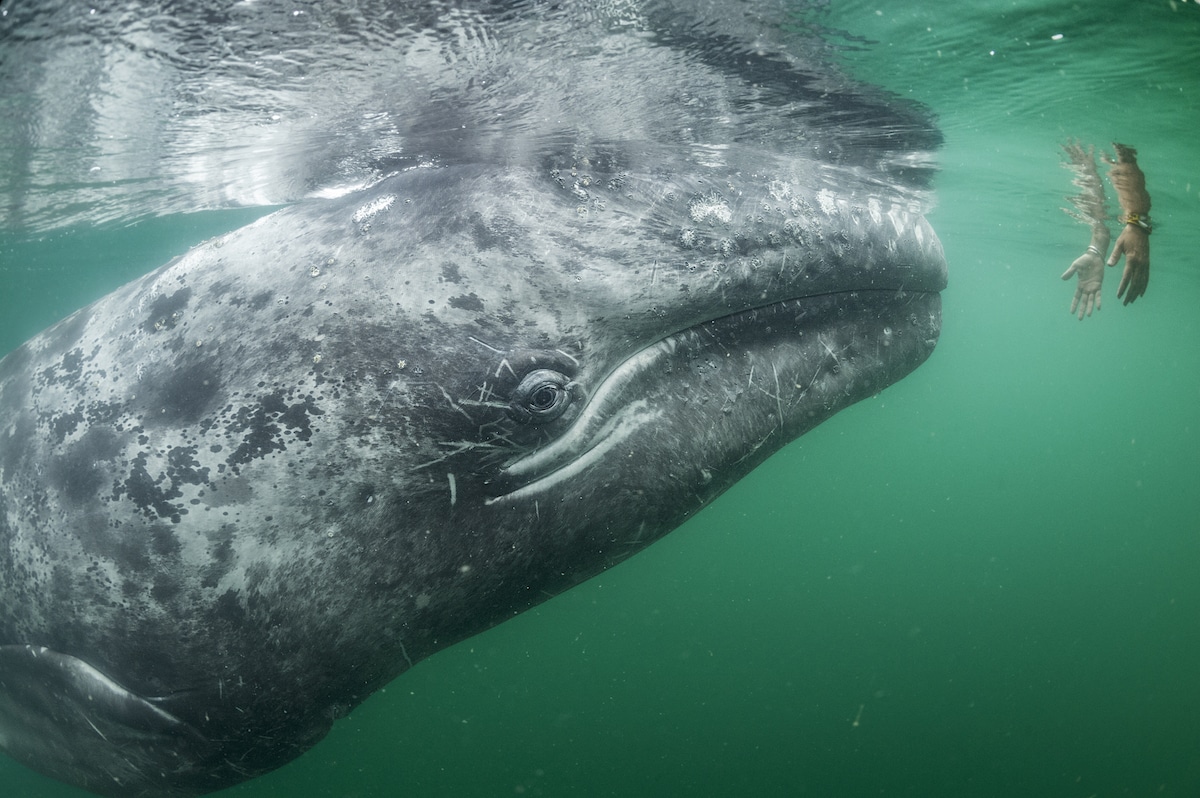
“Touching trust” by Thomas P Peschak (Germany/South Africa).
Highly Commended 2019, Wildlife Photojournalism.
“A curious young grey whale approaches a pair of hands reaching down from a tourist boat. In San Ignacio Lagoon, on the coast of Mexico’s Baja California, baby grey whales, and their mothers actively seek contact with people for a head scratch or back rub. The lagoon is one of three that comprise a grey whale nursery and sanctuary – a key winter breeding ground for this surviving breeding population of grey whales, the eastern North Pacific ones. Whaling left the western population near extinction and wiped out the North Atlantic one. Persecution may also have led to the whales’ aggression towards boats and, in San Ignacio, a long‑lasting fear among local fishermen. But in the 1970s, a young whale approached a fisherman who dared to reach out and touch it. The trust between whales and humans built up, and today many females actively encourage their calves to interact with people. The fishermen have also gained a whale‑watching income in winter – now vital as fish populations and therefore catches decline. In San Ignacio Lagoon, a World Heritage Site, whale‑watching is carefully managed by the community – limited boats, no winter fishing, and interaction only if the whales choose it. Just a few years ago, the community – with international support – also won a lengthy battle to stop a global corporation building a salt plant in the lagoon. For Tom Peschak, a veteran marine photographer and biologist, a whale that demanded petting and got too close for him to focus was a first. In this sanctuary, it is the wild animals that call the shots.”
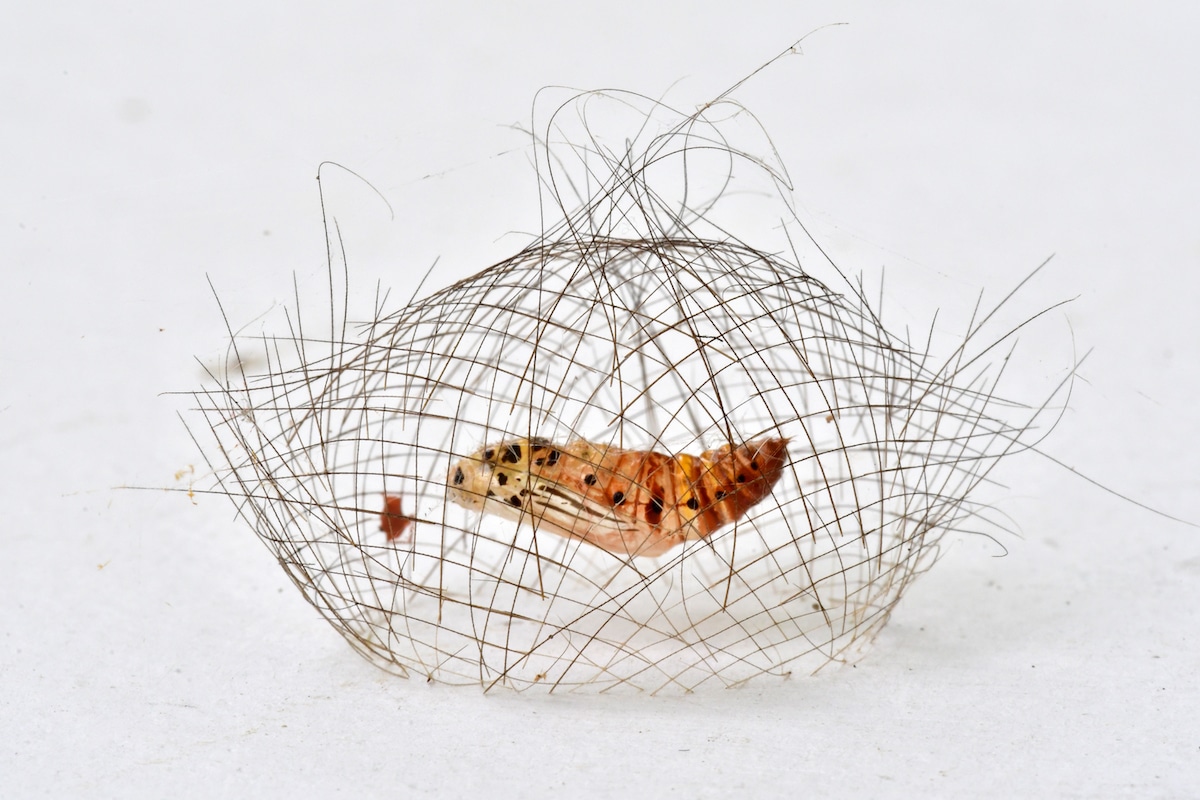
“The hair-net cocoon” by Minghui Yuan (China). Highly Commended 2019, Behavior: Invertebrates.
“Standing side-on to the wall of the WC, his face and camera pressed against it, Minghui focused on the remarkable cocoon of a Cyna moth pupa. A more typical location would be a tree trunk or rock, as in the rainforest of Xishuangbanna, southwest China, where he had just been filming. But this caterpillar had chosen a wall. It had used its long, hair-like setae to weave the delicate cocoon cage, held with silk and just 4 centimeters (11/2 inches) long, inside which it would pupate. The cage must provide protection against some predators but probably not against the wasps that parasitize it. Once in its cage, the caterpillar spits out silk, spinning almost invisible threads to suspend itself, head first from the cage while it turns into a pupa. The cage has an aperture at either end, through which the caterpillar expels its outer layer after its final molt and then–once it has reorganized its body–emerges from the top as a beautiful white moth, decorated in red and black.”
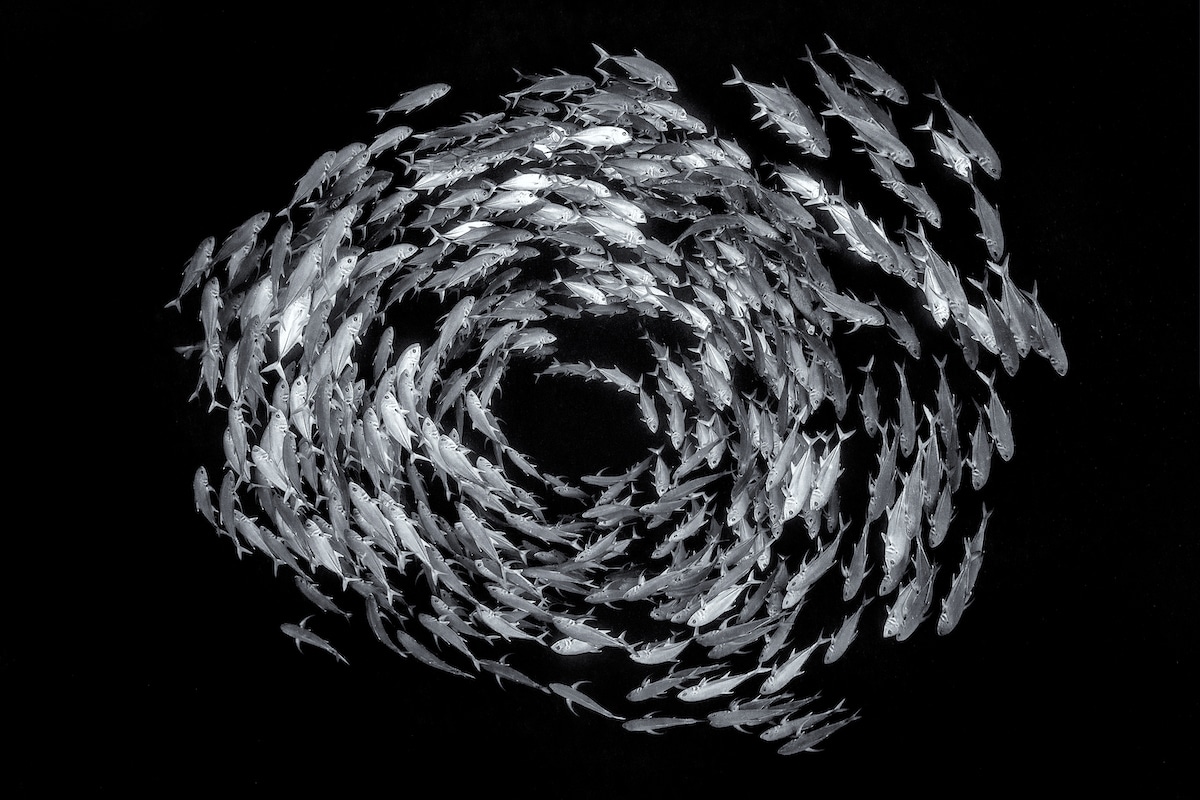
“Circle of life” by Alex Mustard (UK). Highly commended 2019, Black and White.
“In the clear water of the Red Sea, a shoal of bigeye trevally circle 25 meters (80 feet) down at the edge of the reef. For the past 20 years, Alex has traveled here, to Ras Mohammad – a national park at the tip of Egypt’s Sinai Peninsula – to photograph the summer-spawning aggregations of reef fish. ‘The big lure is that I always see something new,’ he says. This time, it was the high numbers of bigeye trevally. Their circling behavior is a dating exercise prior to pairing up, though it also deters predators. Spawning gatherings like this are easily fished out – but not here, as the national park is a no-fishing marine reserve. Using a lens system with a 130‑degree angle of view, Alex captured the shape of the shoal against the deep blue water below, the iridescent angled fish reflecting the light from the sun and his strobes.”
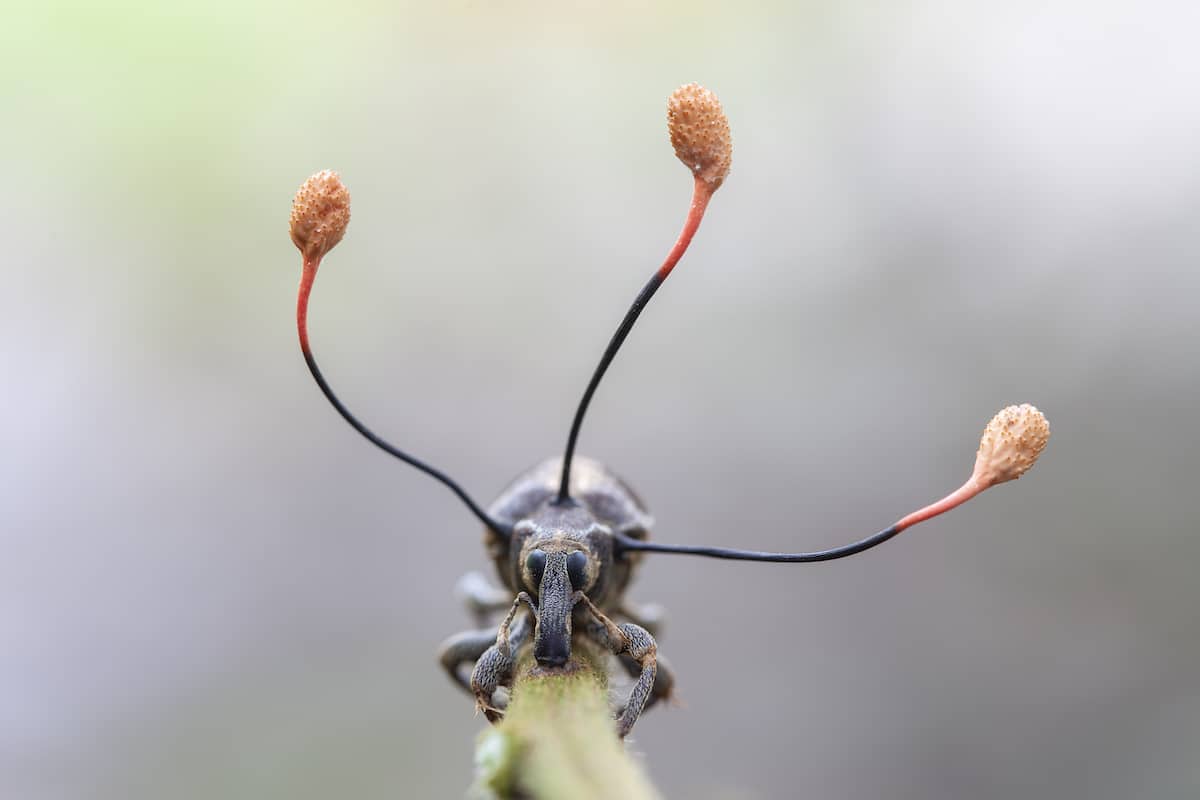
“The climbing dead” by Frank Deschandol. Highly Commended 2019, Plants and Fungi.
“On a night-time field trip in the Peruvian Amazon rainforest, Frank spotted this bizarre-looking weevil clinging to a fern stem. Its glazed eyes showed it was dead, and the three antennae-like projections growing out of its thorax were the ripe fruiting bodies of a ‘zombie fungus’. Spreading inside the weevil while it was alive, the parasitic fungus had taken control of its muscles and compelled it to climb. When it was at a suitable height – for the fungus – the weevil held fast to the stem. Fuelled by the weevil’s insides, the fungus then started to grow fruiting bodies topped by capsules that would release a multitude of tiny spores to infect new prey. Similar ‘zombie fungi’ are known to parasitize other insects. Shooting the weevil head-on, to show its characteristic elongated snout, Frank isolated the fungus against a soft background to emphasize the capsules. By the next day, the spores had been released and the fungus had withered, its mission accomplished.”
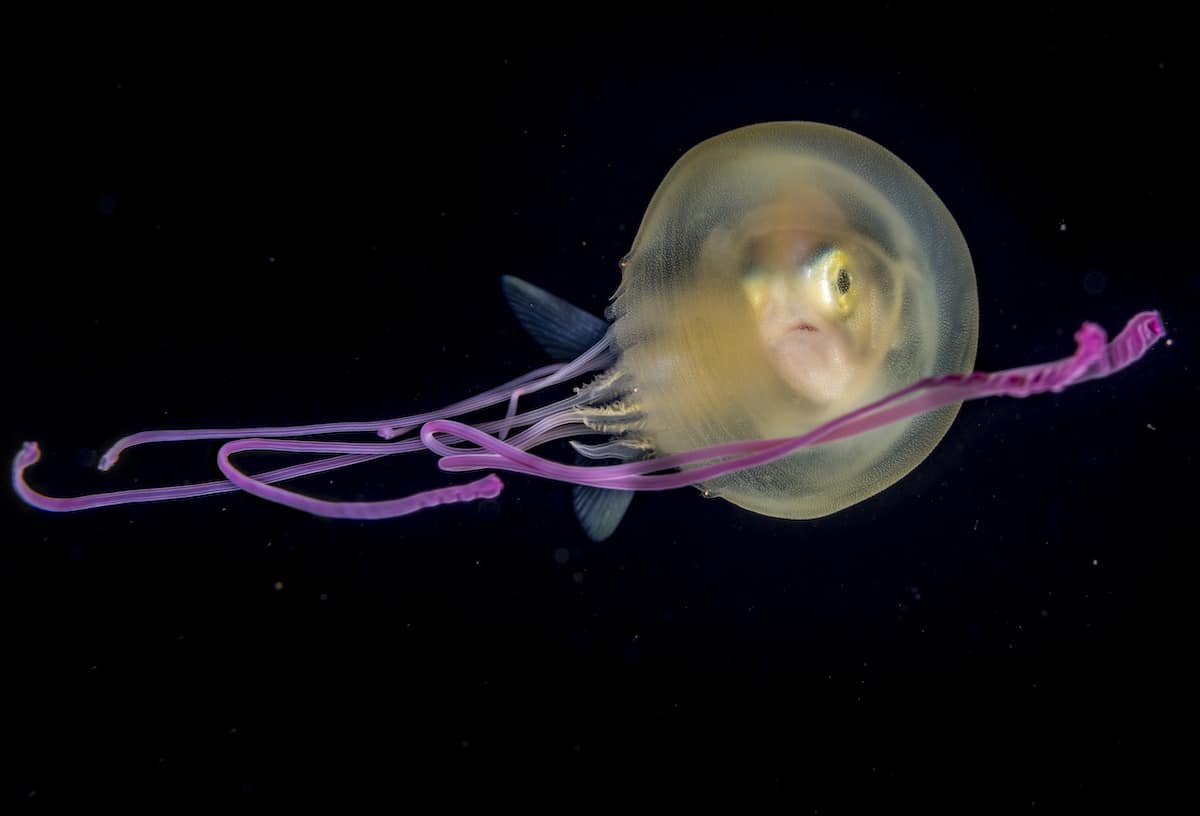
“Jelly baby” by Fabien Michenet (France). Highly Commended 2019, Under Water.
“A juvenile jackfish peers out from inside a small jellyfish off Tahiti in French Polynesia. With nowhere to hide in the open ocean, it has adopted the jelly as an overnight traveling shelter, slipping under the umbrella and possibly immune to the stinging tentacles, which deter potential predators. In hundreds of night dives, says Fabien, ‘I’ve never seen one without the other.’ It is not clear if a jelly derives any benefit or why the relationship breaks down when water acidifies. Diving in deep open water in darkness – here at 20 meters (65 feet) down – is Fabien’s specialty. Zooplankton migrate up from the deep under cover of darkness to feed on surface-dwelling phytoplankton (which need sunlight), and other predators stream after them. Drifting with the jelly and its rider, Fabien combined all the elements of his composition at exactly the right moment.”
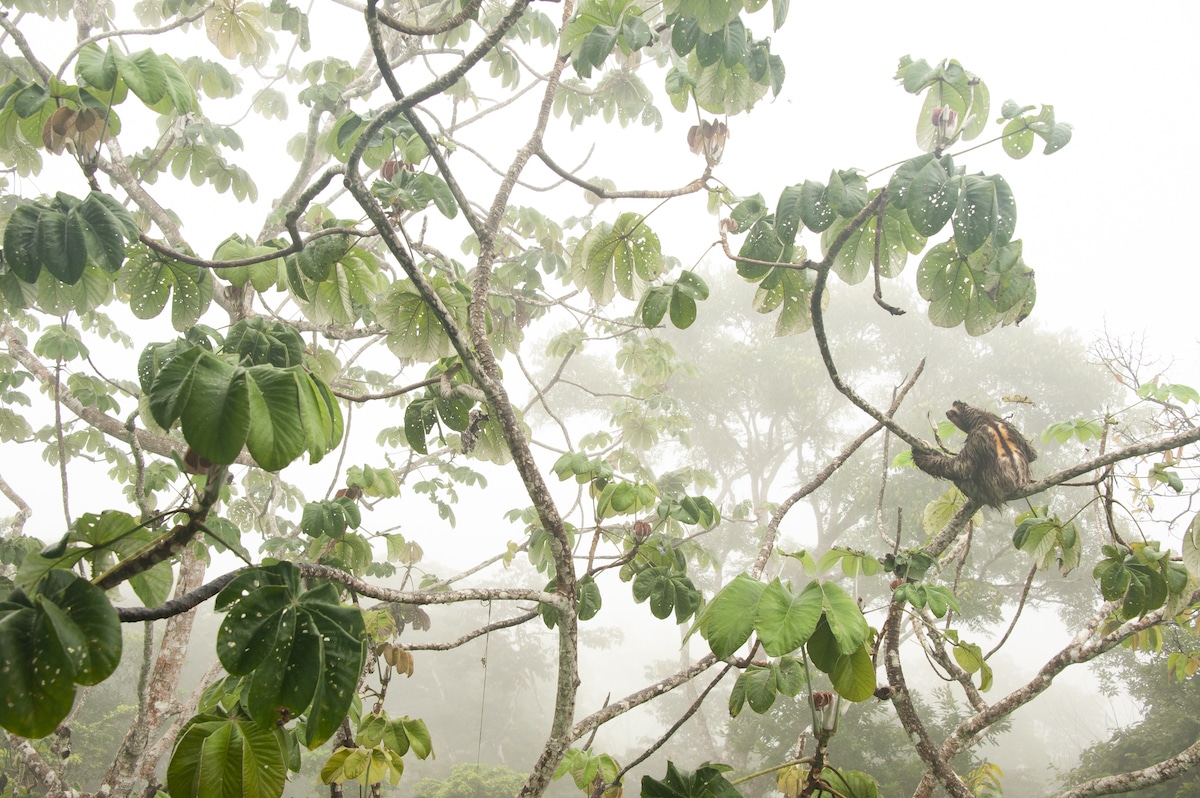
“Canopy hangout” by Carlos Pérez Naval (Spain). Highly Commended 2019, Young Wildlife Photographers: 11-14 years old.
“When Carlos’s family planned a trip to Panama’s Soberanía National Park, sloths were high on their must-see agenda. They were not disappointed. For several days, from the observation deck of the park’s canopy tower, Carlos could photograph not only birds but also this brown-throated three-toed sloth – the orange fur and the dark stripe on its back marking it as an adult male. It hung out in a cecropia tree, resting but occasionally moving, slowly, along a branch to reach new leaves. On this morning, with the forest cloaked in fog and the sloth on the move, Carlos decided on a new composition. Climbing down, he shot from a lower level but at an angle that would still show the sloth’s key features – its three hooked claws clamped to the branch, its characteristic mask-like eye-stripe, and its long, coarse fur. But by deliberately placing it in one part of the frame, he also captured the atmosphere of the forest – ‘the sloth in its environment’.”
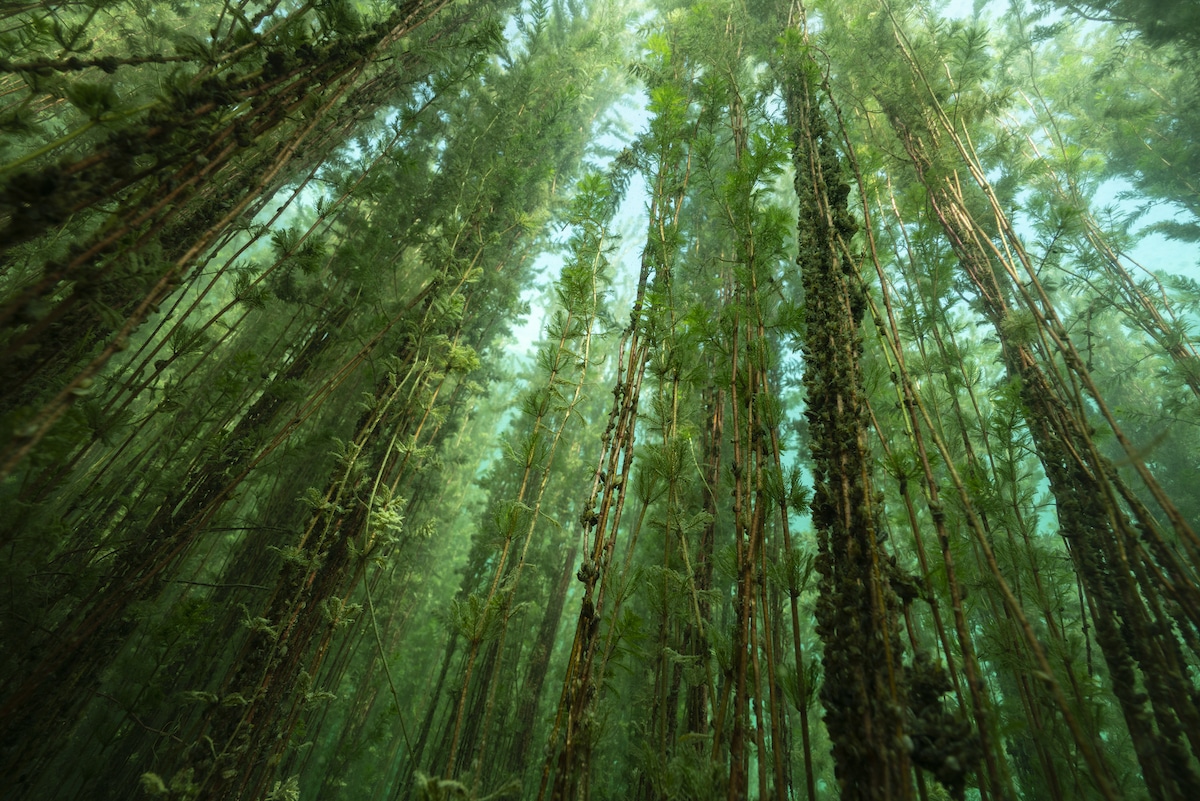
“The freshwater forest” by Michel Roggo (Switzerland). Highly Commended 2019, Plants and Fungi.
“Slender stems of Eurasian watermilfoil, bearing whorls of soft, feathery leaves, reach for the sky from the bed of Lake Neuchâtel, Switzerland. Michel has photographed freshwater regions worldwide, but this was the first time he had dived in the lake nearest to his home. He was swimming near the surface – absorbed with the beauty of the plants and their small reddish flowers – when he spotted a huge pike disappearing into the mass of vegetation below. Very slowly, he sank down for a closer look. When he reached the bottom, he found himself immersed in an ‘underwater jungle with an endless view’. Watermilfoil is native to Europe, Asia, and North Africa but has spread worldwide. It can grow from fragments and so is easily transported, rapidly colonizing ponds, lakes and slow-moving water, with dense growth that can shade out native species. When Michel inspected the stems, extending up several meters, he noticed that some supported thick clusters of zebra mussels. Originating in Russia and Ukraine, these small mollusks, with characteristic banding patterns, are prolific breeders that are spread by boats and have invaded most of western Europe and North America. Their filter‑feeding significantly reduces plankton densities, increasing water clarity and disrupting ecosystems. Carefully maneuvering his bulky diving gear in the tangle of vegetation, Michel composed his picture with a wide-angle to convey the feeling of gazing up from a forest floor, among throngs of towering trees.”
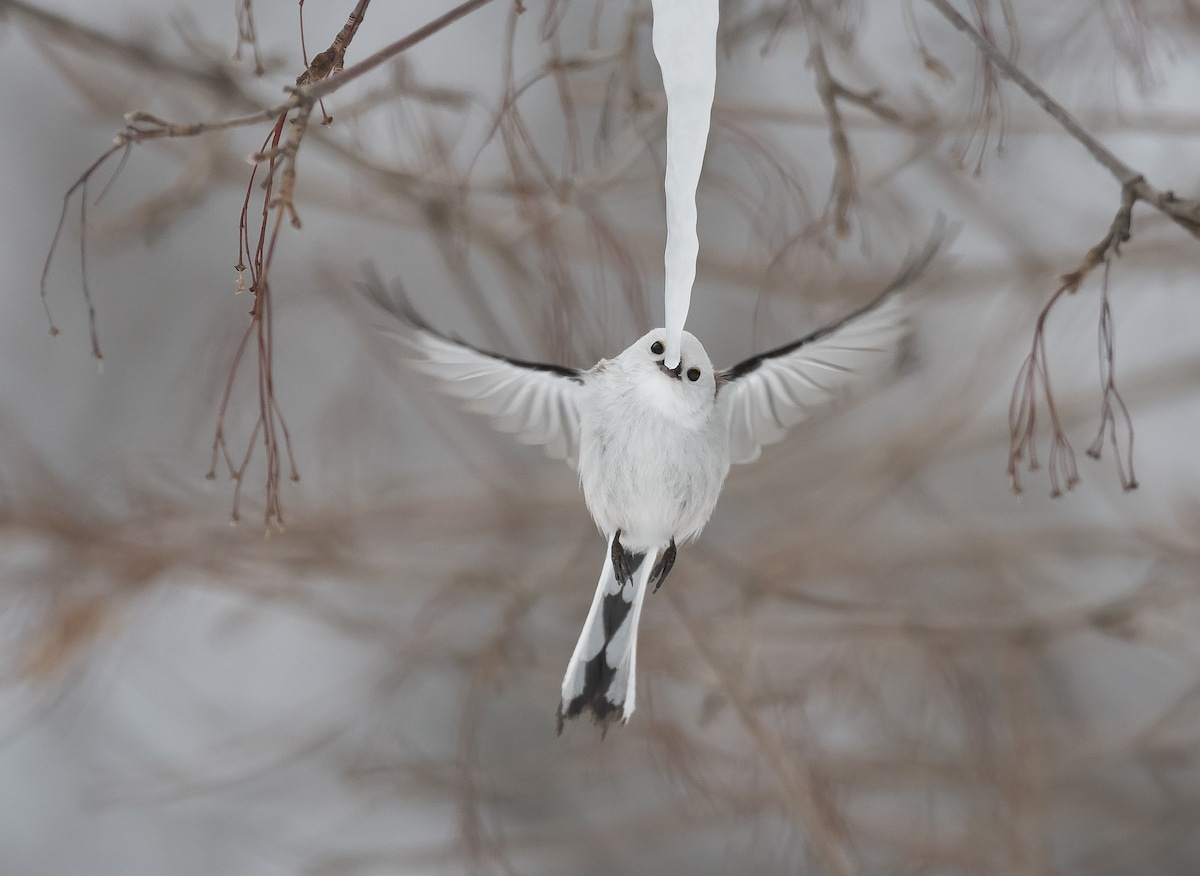
“Cool drink” by Diana Rebman (USA). Highly Commended 2019, Behavior: Birds.
“On a bitterly cold morning on the Japanese island of Hokkaido, Diana came across a delightful scene. A flock of long-tailed tits and marsh tits were gathered around a long icicle hanging from a branch, taking turns to nibble the tip. Here, a Hokkaido long-tailed tit hovers for a split second to take its turn to nip off a beakful. If the sun came out and a drop of water formed, the tit next ‘in line’ would sip rather than nip. The rotation of activity was so fast-moving that it almost seemed choreographed. Two days later, Diana returned and found that, with temperatures still at -20°C (-4°F), the icicle remained and tits were still drinking from it. But when the sun came out and the ice began to melt, one long‑tailed tit chose to cling to the icicle instead of hovering. That instantly brought the performance to an end, as the icicle cracked and then crashed to the ground.”
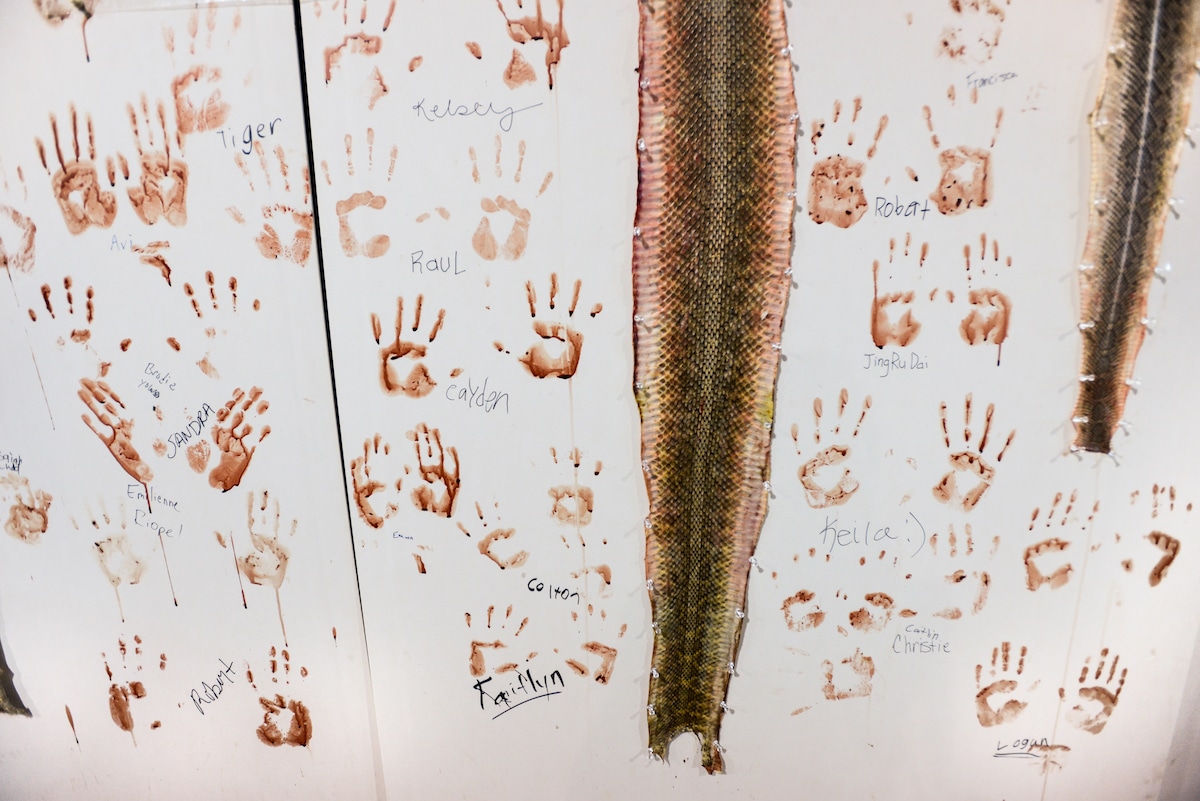
“The wall of shame” by Jo-Anne McArthur (Canada).
Highly Commended 2019, Wildlife Photojournalism.
“Pinned to a white wall are the skins of rattlesnakes. Surrounding them are signed bloody handprints – triumphant marks of those who have skinned snakes at the annual rattlesnake roundup in Sweetwater, Texas. Each year tens of thousands of rattlesnakes are caught for this four‑day festival. In spring, wranglers use gasoline to flush the snakes out of their winter dens – a practice banned in many US states. They are kept in poor conditions before being brought to the festival and tossed into snake pits. They are then decapitated as entertainment for festival-goers, who pay to skin them. Proponents of the roundups claim they are needed to control the populations of venomous snakes to ensure the safety of people, pets and livestock. But opponents regard round-ups as an ecologically damaging, unsustainable and inhumane practice. What Jo-Anne found most unsettling about this image was ‘that so many of the bloodied handprints belonged to children’.”












































































